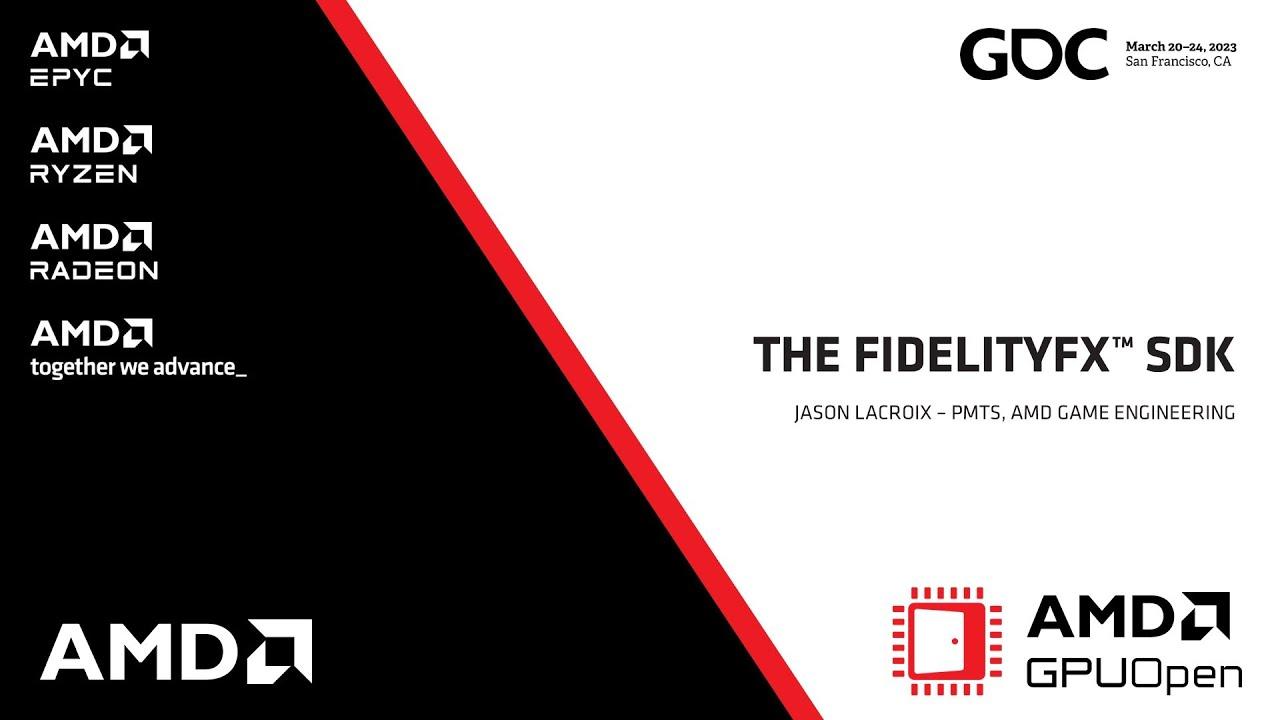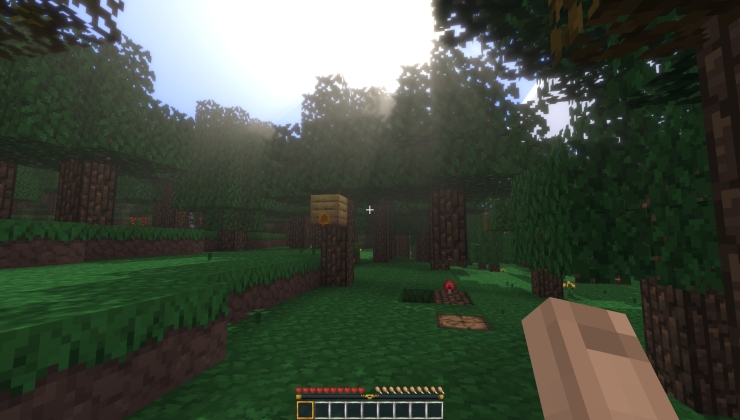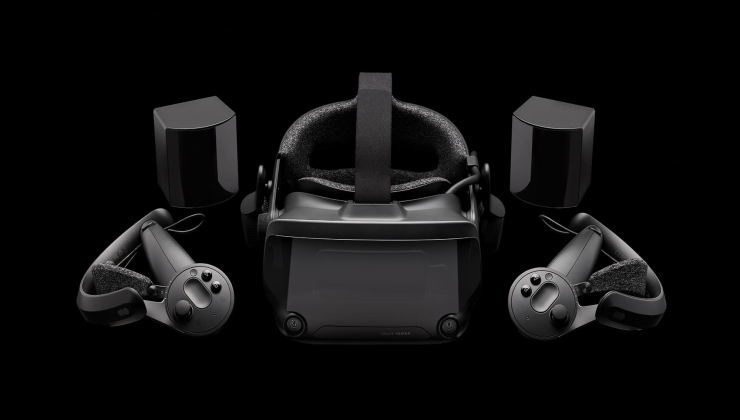AMD had plenty to show off at GDC, and they've done a bit of a summary and some of it is quite exciting for future games.
FidelityFX Super Resolution (FSR) is open source and they will be sticking to that with the MIT license, with FSR 3 getting some more early details but they said it's still too early to show a lot of it. As explained in their GPUOpen post they're introducing "interpolated frames" which has allow them to get a "2x framerate boost". It's more complex though with some challenges:
- We can’t rely on color clamping to correct the color of outdated samples.
- Non-linear motion interpolation is hard with 2D screen space motion vectors, which is why we recommend at least 60fps input.
- If the final frames are interpolated, then the UI and all post-processing will also need to interpolated.
However, there is good news!
- There’s a high probability there will be at least one sample for every interpolated pixel.
- There’s no feedback loop as the interpolated frame will only be shown once – any interpolation artifact would only remain for one frame.
With FSR 3 you're going to get better framerates at the cost of latency. However, they said they will be including "latency reduction techniques to FSR 3". AMD also said it should be easier to integrate FSR 3 if developers already support FSR 2.
Additionally they've announced the FidelityFX SDK, also open source, which combines together their multiple effects libraries giving developers an easier way to integrate it. As previously their stuff has all been spread-out, causing problems for developers with "inconsistencies in coding and documentation standards, limited platform/API support" and so this SDK is their attempt to to "do better".

Direct Link
If the frame interpolation can do some kind of async reprojection like with VR games, but for non-VR games, it will really help a lot, even at lower framerates. It doesn't sound like they are doing that, as they talk about about preferring 60 fps. Probably they are doing something closer to what TV's have been doing for the last decade (and that looks very weird to me).
Still, FSR has been quite a leap in performance on lower end systems already, here's to hoping there's more to come
Yes I know, i know, new technology good 'im missing the point' etc..
I will laugh if after this nvidia shows up and says "you know what, dlss 3 is actually possible on rtx 2000 series" because it will be the last chance to push this proprietary nonsense on people
Would be nice. The situations in which one would even "need" DLSS 3 extend pretty much to older cards that are getting into their grey hair years, DLSS 3 would give them a new lease on life. If you have a 4000 series card, it has enough raw horsepower that the situations in which DLSS 3 is necessary are slimmer in quantity.
the latest dlss and fsr implementations are not upscaling. When we talk about upscaling, we usually mean taking a pixel and making more pixels out of it. Dlss takes several pixels from different frames and makes a picture of higher resolution. Since all of those pixels are rendered with tiny offset, each pixel has unique information about the portion of frame it shows. This method works so well that for static scenes it can achieve nearly ground truth quality even on the lowest input resolutions. In dynamic scenes a lot of old pixels are discarded because they are too different from the current frame and can't help in picture reconstruction, and there you can see that places with a lot of movement get low res, but in those moments it is rarely that important.
Well, it's still upscaling, just more complex one than simply using a static frame. I think by mere theory of it, no matter how you upscale, you can't guarantee that resulting quality will be equal to the original. Algorithms try to be smart with approximations or predictions, but it's still not equal to original rendering at that resolution.
So while it might look good enough in some sense, avoiding it will by definition be likely better. So my point is, that if you can avoid it, then you get guaranteed level of quality. Otherwise it becomes something moot.
The whole push into these upscaling methods began when GPUs stopped coping with rendering at resolutions some wanted to them to render at fast (like 4K and such). So my take on it is to simply avoid those resolutions and use those which GPU can handle without upscaling properly.
Last edited by Shmerl on 26 Mar 2023 at 11:53 pm UTC
Last edited by Shmerl on 27 Mar 2023 at 6:04 am UTC
I will laugh if after this nvidia shows up and says "you know what, dlss 3 is actually possible on rtx 2000 series" because it will be the last chance to push this proprietary nonsense on people
Anyone remember Gsync Displays? Me neither.










 How to set, change and reset your SteamOS / Steam Deck desktop sudo password
How to set, change and reset your SteamOS / Steam Deck desktop sudo password How to set up Decky Loader on Steam Deck / SteamOS for easy plugins
How to set up Decky Loader on Steam Deck / SteamOS for easy plugins
See more from me